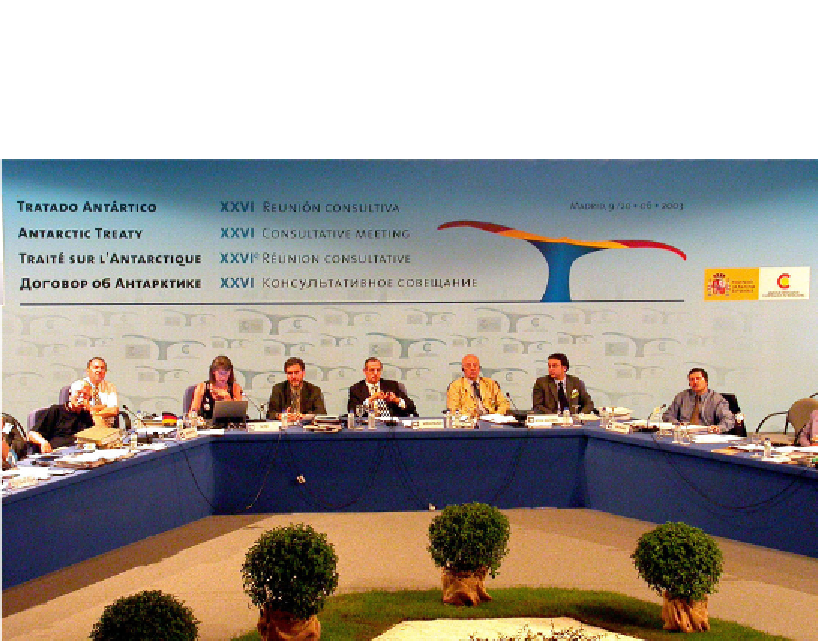Geoscience Reference
In-Depth Information
Figure 9.10
Anna Jones (UK), seated by the open laptop computer at left, delivers the
rst
SCAR Lecture to the Plenary at XXVI ATCM in Madrid in 2003. (Credit: Peter Clarkson, SCAR).
such advice also to younger related organisations, such as CCAMLR. SCAR papers
presented to the annual Treaty meetings can be accessed at
http://www.scar.org/
SCAR lecture at each Antarctic Treaty Consultative Meeting (ATCM). A signi
cant
recent accomplishment was publication of the Antarctic Climate Change and the
Environment Review (ACCE) (
www.scar.org/publications/occasionals/acce.html
)
.
Through its advice, SCAR has signi
uenced the way the Antarctic Treaty
has developed since being signed into law in 1961 (
Table 9.3
), but walking the line
between independent advice and politically charged agendas has never been easy.
cantly in
SCAR and the Fourth International Polar Year (2007
-
09)
This is not the place for a comprehensive review of the recent IPY. Suf
ce it to
say that the fundamental concept of the IPY was of an intensive burst of
internationally coordinated, interdisciplinary, scienti
c research and observations
focussed on the Earth
cial observing period from
1 March 2007 until 1 March 2009. The IPY would aim to exploit the intellectual
resources and science assets of nations worldwide to make major advances in polar
knowledge and understanding, while leaving a legacy of new or enhanced
'
s polar regions during an of



Search WWH ::

Custom Search